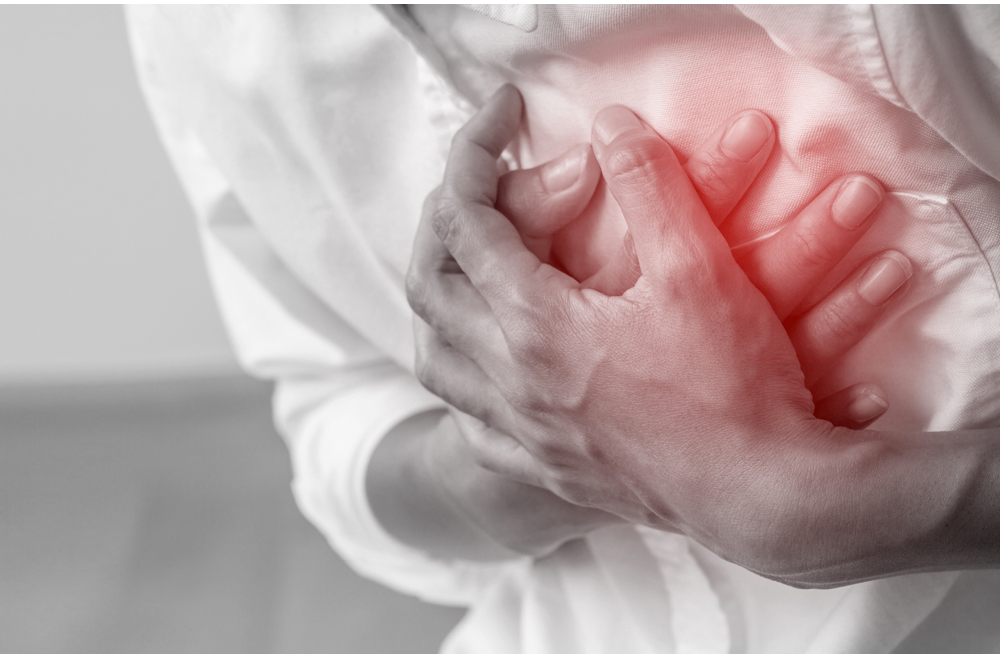Angina pectoris: our advice

The term "angina pectoris" refers to a feeling of pain or discomfort in the chest. Angina pectoris occurs when the heart muscle does not get enough blood and as a result, not enough oxygen, to function normally. Angina pectoris is usually caused by the hardening of the arteries.
When plaques largely block the coronary arteries that irrigate the heart, the heart muscle can be temporarily deprived of oxygen. This lack of oxygen in the heart tissues results in intense chest pain, known as angina pectoris. It is the coronary arteries, all around the heart, that provide its nutrients. Sometimes these become clogged and begin to clog, due to deposits of fat called plaques of artheromas. At rest the coronaries feed the heart sufficiently. But during an effort his needs are more important and the coronaries blocked, can no longer supply him enough oxygen. The heart then suffers and alerts us: The pain in the chest appears.
Angina pectoris is a warning signal that the heart is under stress. It is extremely difficult to differentiate angina pectoris from the heart attack and you must therefore act without delay if you have a member of your entourage who is experiencing pain or tightness in the chest. Angina pectoris results in pain or chest discomfort caused by cardiovascular disease.
THREE TYPES OF ANGINA PECTORIS
Angina pectoris stress
Caused by a temporary decrease in blood supply to the heart, stress angina is triggered by physical exertion or strong emotions and generally yields with rest.
Unstable angina pectoris
Unstable angina pectoris, more severe form, can be triggered at rest.
Any change in the usual manifestations of angina pectoris (eg, more frequent or longer seizures) is a sign of unstable angina pectoris and requires urgent and immediate attention. Unstable angina resembles the destabilized chronic stress angina that occurs more often than usual.
Spastic Angina (Prinzmetal)
This is a type of angina pectoris caused by a spasm occurring in a coronary artery rather than by accumulation of plaque. Prinzmetal angina or unstable angina is a variety of angina during which the patient has the highest risk of occurrence of myocardial infarction and this in a relatively short period. This type of angina occurs at rest and most often in the early morning, sometimes at night.
THE CAUSES OF ANGINA PECTORIS
There are several factors that cause angina pectoris. The most important risk factors are:
• Arteriosclerosis
• Hypercholesterolemia
• Diabetes
• Hypertension
• ObesityTobacco
SYMPTOMS AND SIGNS
• TENSION
• INSOMNIA
• PAIN IN THE CHEST
• SWEATING
• NAUSEA
• CRAMPING OR SHORTNESS OF BREATH
Angina is usually felt as tightness, oppression, Heaviness or pain in the chest, especially behind the sternum. This pain often radiates to the neck, jaw, arms, back and even teeth. Patients may also complain of digestive problems, heartburn, weakness, sweating, nausea, cramping or shortness of breath. Angina usually occurs during exercise, significant emotional stress or after a hearty meal. During these periods, the heart needs more oxygen than the narrowed coronary arteries can provide. Angina usually lasts from 1 to 15 minutes.
Angina pectoris is a symptom of heart disease. It is usually a pain or discomfort located behind the sternum (in the center of the chest). The pain often radiates in the left shoulder, arm, back and even in the neck, to the jaw. Angina pectoris usually last three to five minutes and almost always stop with rest. They may occur several times a day or occasionally, with intervals of several weeks or several months between seizures.
Pain of angina pectoris is particularly characteristic. It is a sensation of destruction, in a bar, which radiates towards the left shoulder, the jaw, the internal face of the arm or the left hand. Dental or neck pain is particularly significant. On the other hand the patient designates this pain with a closed fist, which it applies to the chest. It rarely refers to a single finger, which corresponds rather to intercostals pain (differential diagnosis) or Treitz syndrome. This syndrome (set of signs) is characterized by an increase in volume with pain in the chest and the origin of which is the head of one or more cobalt cartilages.
HEALTH RECOMMENDATIONS
The first gestures
A lot to avoid suffering a day of angina, especially by choosing to live healthier: giving up cigarettes if you smoke, losing weight if you are overweight, getting more exercise and adopting a diet lower in fat. However, of all these measures, quitting smoking is probably one of the most important steps. All chronic health problems that increase the risk of angina pectoris can be treated. Fight effectively against diabetes, high blood pressure (high blood pressure), or the presence of high cholesterol.
RELATED PRODUCTS




Comments
Leave your comment